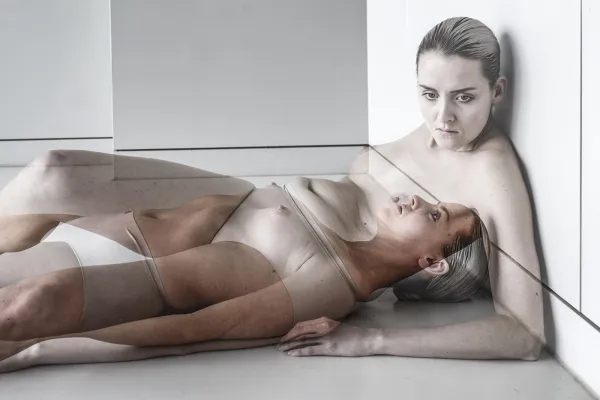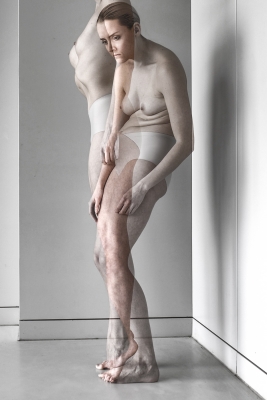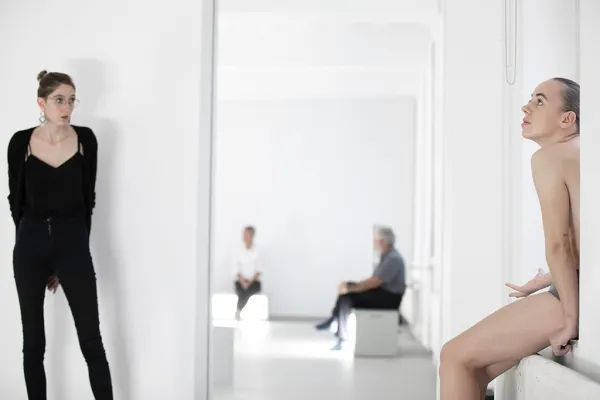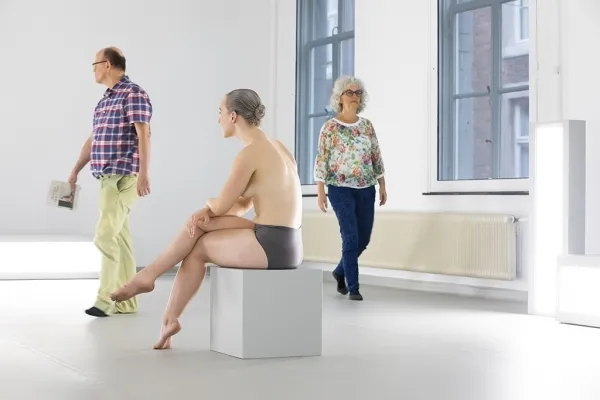Anyone who studies the archives of humankind sees an one-sided image of humanity; one that is focused on measurability and control. We reduce people to comparable data, to categorizable differences, in order to be able to optimize control over our fate. But is this how we want to be remembered?
Choreographer Katja Heitmann wants to write a different history. She wants to create an archive in which the most essential, paradoxical and elusive core of mankind is preserved. An attempt to archive the impossible: an archive of movement. Since 2019, more than 2000 people have already donated their personal movement to the multi-year art project Motus Mori, an ever-growing foundation from which the choreographer creates new artworks.
A repository for movement requires an active institute that literally moves for and through people. In such an institution a new form of historiography takes place: not a theoretical but an embodied historiography. The body as an archive.
In MUSEUM, dancers are the archive. They are in motion for several hours a day and exhibit the movements they have collected through interviews with thousands of people from all walks of life. This exhibition of choreographic portraits presents an impressive and poignant picture of humanity. You might find yourself in this archive, or recognize someone you know?
The Motus Mori Institute is a place for process. Every development is shared with the audience in public manifestations. This institute literally ‘moves’; in the years to come, as it will be located in various cities, presenting the archive in exhibitions, performances, installations and rituals.
See for the dedicated website www.motusmori.com
THE NEW YORK TIMES, Zoey Poll
Turning the Gestures of Everyday Life Into Art – The New York Times (nytimes.com)
De Standaard ****, Charlotte de Somviele
“It is kinetical empathy at its best.”
De Volkskrant ****, Annette Embrechts
“I recognize my ‘translated’ tics and gestures, whispering mixed with those of Pavel, Monika, Tosca and Herr Stamm. Highly an original work.”
Museumtijdschrift, Edo Dijksterhuis
“Museum Motus Mori is a kinetic portrait of all of us. The way this comes to form, via the body instead of via the mind, is more effective, more direct and more touching than any video, photo or text will ever be.”
NRC, Francine van der Wiel
“In Museum Motus Mori Heitmann collects, describes, archives and exhibits the minimal movements, we all make every day, but which immediately disappear. – the beauty and vulnerability of dance in a sophisticated concept.”
Oerol Dagkrant (Daily blog of Oerol festival), Jantine Jongebloed:
“An attempt to understand my emotion at the Motus Mori Museum.”
Credits Motus Mori Museum (2019 – now)
choreography & concept: Katja Heitmann
music, concept & production: Sander van der Schaaf
artistic assistance: Moene Roovers
movement coach: Wies Berkhout
artistic advice: Christina Flick, Ingrid de Rond, Liesbeth Groot Nibbelink
video & photography; Hanneke Wetzer
performers/movement-archivists; Wies Berkhout, Eleni Ploumi, Ornella Prieto, Julia Drittij, Lea Christensen, Rebecca Collins, Karolien Wauters, Manou Koreman, Twan van Diest, Adina Ternström, Merle Schiebergen, Anne Roeper, Leanne Hekkert, Dorothea Mende, Rachel Rijsdijk, Cynthia Verpoorten, Myrthe Marchal, Ines Pona, Clara Grosjean, Youri Peters, Anton van der Sluis, Emiel Sanders, Ida Osten, Josy Patzelt, Boris Boes, Maria Mora Navarro, Dana Schilperoort
co-production: tanzhaus nrw (DE), Marres house for contemporary culture (NL), STRP Festival for art and technology (NL), DansBrabant (NL)
partners: SPRING Performing Arts Festival (NL), Theaterfestival Boulevard (NL), December Dance Brugge (BE), CaDance/ Korzo (NL), Theater De Nieuwe Vorst (NL), Arcadia Leeuwarden (NL), International Dance Theatres festival/ Centrum Kultury Lublin (PL), Grand Theatre Groningen (NL)
supported by: Fonds Podiumkunsten, Provincie Noord Brabant, Gemeente Tilburg, Grensverleggers-De Buren, Bündnis Internationaler Produktionshäuser, Die Beauftragte der Bundesregierung für Kultur und Medien, Stichting Dioraphte





